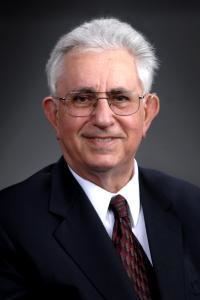Nationality American Fields Chemical Engineering | Residence Texas, United States Name Adam Heller | |
 | ||
Institutions Bell LaboratoriesGTE LaboratoriesUniversity of Texas at Austin Alma mater Hebrew University of Jerusalem Awards National Medal of Technology and Innovation | ||
How to heal yourself from most chronic pain permanently adam heller with james rick
Adam Heller (born June 25, 1933) is an Israeli-American engineer and Research Professor of the John J. McKetta Department of Chemical Engineering at the University of Texas at Austin. He formerly held the Ernest Cockrell Sr. Chair in Engineering of the Cockrell School of Engineering at the University of Texas. As of 2016, he was granted 271 U.S. patents with 392 patent applications pending. He consults to Abbott Diabetes Care, Inc. of Alameda, California, the maker of the Freestyle line of products. He also serves as Chief Scientific Officer of Synagile Corporation, a venture developing continuous oral drug-infusion systems, particularly for managing advanced Parkinson's disease.
Contents
- How to heal yourself from most chronic pain permanently adam heller with james rick
- Ecs masters adam heller
- Holocaust
- Academia
- Abbott Diabetes Inc
- Research
- Awards
- References
Ecs masters adam heller
Holocaust
Adam Heller was born in 1933 to Jewish parents in the Romanian city of Cluj (now Cluj-Napoca). In 1944, following the Second Vienna Award, the Hungarian administration confiscated his family's property, and they were forcibly relocated along with more than 18,000 other Jews to the Kolozsvár Ghetto within the walls of the Iris Brickyard. In late May of the same year, the prisoners of the ghetto at Kolozsvár were transported out of the ghetto as part of the Nazi Final Solution. Heller and his immediate family survived on Kastner's train. In 1945, he arrived in British Mandate Palestine, which became the State of Israel in 1948.
Academia
Heller received his M.Sc. and Ph.D. from Hebrew University in 1961, where he studied under Ernst David Bergmann. After post-doctoral research at the University of California, Berkeley (1962–1963) and at Bell Laboratories in Murray Hill, New Jersey (1963–1964), he worked at GTE Laboratories in Bayside, New York and in Waltham, Massachusetts (1964–1975), then returned to Bell Laboratories (1975–1988), heading its Electronic Materials Research Department (1977–1988). Under his stewardship, a team led by King L. Tai, developed key parts of the high speed, high density chip-to-chip interconnect technology of mobile electronic systems.
Abbott Diabetes Inc.
While a professor of engineering at the University of Texas at Austin (1988–present), he and his son Ephraim Heller co-founded TheraSense in 1996, now part of Abbott Diabetes Care, Inc. He was the first Chief Technical Officer of the company. The FreeStyle™ system of TheraSense, a micro-coulometer released in 2000, made the monitoring of blood glucose painless by accurately monitoring the glucose concentration in 300 nanoliters of blood. With more than a billion units produced annually, FreeStyle™ is the highest impact nanotechnology or micro-fluidic device to-date. The FreeStyle Libre™ system of Abbott Diabetes Care continuously monitors subcutaneous glucose levels in diabetic patients. It is the first glucose monitoring system that is completely bloodless. Its patient-replaced glucose concentration transmitting skin patch operates for two weeks without periodic blood-requiring calibrations. It is based on the electrical wiring of enzymes, the science and technology of which were created by Heller.
Research
His study of the physical chemistry of inorganic oxyhalide solutions resulted in the first neodymium liquid lasers (1964–1967). It also resulted in one of the earliest lithium batteries, the globally manufactured lithium thionyl chloride battery (1973) used in implanted medical and in defense systems where greater than a 20-year shelf life, high energy density, or operation at any temperature encountered on Earth are required.
His studies of photoelectrochemical solar cells resulted in 11.5% efficient solar cells (1980) and in 12% efficient hydrogen evolving photoelectrodes. His related studies with Heinz Gerischer of photoelectrocatalysis established that the rate of photo-assisted oxidation of organic matter on photocatalytic titanium dioxide particles was controlled by the rate of reduction of adsorbed oxygen by trapped electrons.
He established the field of electrical wiring of enzymes (1988–2005), the science and engineering of the transduction of the turnover rates of electron-transferring reactions of enzymes to electrical currents without use of diffusing oxidants or reductants. His study of the electrical wiring of glucose oxidase enables the continuous and bloodless glucose monitoring with subcutaneously implanted sensors. It is the core technology of the FreeStyle Libre™ system of Abbott Diabetes Care, having a glucose concentration transmitting skin adhered patch that is replaced every two weeks by the user. Unlike earlier monitors, it operates without periodic blood-requiring calibrations.
Awards
In 2008, he was awarded the National Medal of Technology and Innovation for the year 2007, the highest technology award in the United States. Earlier, in 1987 he was elected to the U.S. National Academy of Engineering and in 2009 to the American Academy of Arts and Sciences. In 2015, he became the 78th Honorary Member of The Electrochemical Society. He was named Guest Professor of the Collège de France in 1982 and received honorary doctorates from Uppsala University in Sweden in 1991 and from Queen’s College of the City University of New York in 2008. His medals include the Spiers Medal and the Faraday Medal of the Royal Society of Chemistry, UK, the Vittorio De Nora Gold Medal of The Electrochemical Society and the Fresenius Gold Medal and Prize of the Society of German Chemists and the Torbern Bergman Medal of the Swedish Chemical Society, which he shared with Allen J. Bard. His awards include the Battery Research Award, the Grahame Award and the Heinz Gerischer Prize of The Electrochemical Society, and the Chemistry of Materials and Creative Invention Awards of the American Chemical Society and the American Institute of Chemical Engineers Service to Society Award, and its Chemical Engineering Practice Award.
